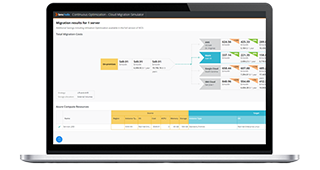The U.S. Department of Agriculture (USDA) recently moved critical agency services into a multi-cloud environment, partnering with VVL Systems & Consulting (VVL) for strategic and tactical guidance. Vinnie Lima is its managing director, and he shared his experiences on the migration and collaboration in a conversation with BMC. In this post, we share his insights and offer key strategies for success.
Introduction: VVL Supports Cloud Migration at the USDA
VVL is an IT outsourcing and managed services provider with an over 20-year track record of working with Fortune 500 enterprises and government agencies. The company offers a breadth of solutions that help customers realize maximum value and success with their IT infrastructures and investments. VVL has been a BMC partner for more than a decade, and is focused today on cloud, automation, and optimization.
The USDA has nearly 100,000 employees spread out across 29 agencies and offices. When USDA decided to modernize and adopt hybrid and multi-cloud strategies, VVL was engaged to support these initiatives, which led to the development of AgCloud, the USDA’s multi-cloud management solution.
To navigate the complexities of a migration within such a large government agency, Lima and his team worked across several operational and organizational layers. Its engagement began with a pilot project to demonstrate that a hybrid, multi-cloud strategy could be functionally manageable and sustainable within a federal agency.
Applying an agile-based approach, VVL focused on establishing connectivity, architecture, and security parameters and addressed specific operational efforts, such as incident and change management, monitoring, and patching.
The USDA must comply with the Federal Information Security Management Act of 2002 (FISMA), which has accreditation levels based on the confidentiality, integrity, and availability of systems and data. Critically-important assets and services were among the workloads being migrated, which meant stringent requirements had to be addressed.
Guiding Principles: Cloud Smart vs Cloud First
In 2010, the federal government issued a Cloud First initiative intended to accelerate the adoption of cloud computing. While the policy helped spur pressure to make a move to the cloud, it also introduced a lot of uncertainty.
“The Cloud First strategy had people feeling they had to go to the cloud quickly, no matter what,” Lima explained. “The reality is that this rush to the cloud can be risky. The challenge is determining whether the organization is really ready to make the move, and how to make the move when the time is right. To be successful, organizations have to establish the processes, tooling, culture, training, and skillsets that are aligned with the cloud.”
If these aspects aren’t aligned with cloud environments, it can introduce significant risk to the organization. For example, moving to the cloud can introduce significant security risk if organizations don’t take the time up front to establish the proper controls. Similarly, when organizations migrate to the cloud without the required cost management capabilities, executives are often shocked by the bills that come in.
“The cloud is a force multiplier,” Lima revealed. “The cloud can accentuate an organization’s benefits when the workflows, strategies, and controls are well conceived. However, the cloud can also magnify the negative consequences when the key requirements and considerations aren’t addressed up front.”
In 2018, a new Cloud Smart initiative was unveiled within the federal government. Along with other agencies, the team at the USDA began to focus on taking a cloud smart approach. At a high level, this approach is characterized by looking holistically at all key considerations—including processes, tools, culture, training, and so on—and making the move in calculated, considered way.
Guiding Principles: Cloud Smart versus Cloud First
The Cloud First initiative issued in 2010 was established to accelerate the adoption of cloud computing. While the policy helped spur pressure to make a move to the cloud, Lima explains that it also introduced a lot of uncertainty. “[It] had people feeling they had to go to the cloud quickly, no matter what,” he says.
“The reality is that this rush to the cloud can be risky. The challenge is determining whether the organization is really ready to make the move, and how to make the move when the time is right. To be successful, organizations have to establish the processes, tooling, culture, training, and skillsets that are aligned with the cloud.”
If these aspects aren’t aligned, or if proper controls aren’t established, it can introduce significant risk to the organization. Similarly, when organizations migrate to the cloud without the required cost management capabilities, executives are often shocked by the actual cost.
“The cloud is a force multiplier,” Lima explains. “The cloud can accentuate an organization’s benefits when the workflows, strategies, and controls are well conceived. However, the cloud can also magnify the negative consequences when the key requirements and considerations aren’t addressed up front.”
Key Strategies and Considerations
In 2018, a new federal Cloud Smart initiative was unveiled, with the USDA one of several agencies to participate. As it began migration work, the project adhered to six strategies and considerations.
Establish effective plans
According to Lima, a successful cloud migration starts with an effective plan that strikes a balance between the near-term and the long-term. “It’s critical to establish reachable goals,” he points out. “Be realistic about what can be accomplished [while also having] visionary ideas and road maps.”
The VVL and the USDA leveraged agile, fail-fast approaches, setting up an effective roadmap with quick wins that contributed to longer-term goals. They also communicated regularly with senior leadership about near-term results, the long-term vision, and the value proposition.
Stay focused
In pursuing a long-term, large-scale initiative, it’s important to focus on core objectives, including higher-level course corrections and daily tactical requests and changes. In encountering these requests and changes, Lima and his team would continually ask:
- Why would we do this?
- Is it important to the mission?
- If it is built, will anybody use it?
Account for culture
When it comes to cloud migration, cultural barriers are often more significant than technological barriers in determining success. “In managing a cloud migration, you need to take a 360-degree view of the organization’s culture,” Lima shares. “Look at staff members’ skill sets, habits, and approaches; how the various teams operate; how they deliver services to customers; and so on.”
Highly siloed organizations, workflows, and expertise are common within many businesses and government agencies, and each has its own sets of tools, techniques, behaviors, and habits that must change as new approaches and cultures are established. Staff skills can be a key challenge, and Lima says you need to have the right people with the right training and skillsets.
It’s also important to consider the benefits of automation while balancing the concern within operations and engineering teams that their roles will be impacted. To ensure widespread support and participation, establish a forum for communication that addresses these inherent concerns and focus on the positives.
“The reality is that no one really likes to do tedious, manual work,” Lima says. “On a practical level, automation removes a lot of the mundane and tedious tasks that teams have to do. [Automation] and cloud migrations can enable organizations to deliver services faster, better, and more consistently and cost effectively [so] the workforce [can] focus on efforts that matter most to the organization’s mission.”
Promote staff knowledge and skills
As an add-on to culture, it’s important to promote from within. Look at existing IT teams for staff who can work on automation tasks and assist with cloud migrations. Those staff should tap into available training and certifications, stay current, and follow what’s happening in the industry. This empowers them to be more innovative, deliver more value to their organizations, and be more successful in their careers.
Evaluate processes
One of the biggest challenges Lima has confronted is understanding how current processes will translate to the cloud. It’s not necessarily about replacing processes, but instead advancing and modernizing them so they support dynamic cloud environments and provide higher scalability and agility as teams pursue DevOps and agile efforts and continuous improvement/continuous delivery (CI/CD) pipelines, etc., faster than ever before.
Establish approaches for managing cost, security, automation
Before moving to the cloud, it’s imperative to establish plans for how cost, security, and automation will be managed and assess whether current approaches and technologies are still viable. Determine where there are gaps that may hinder the organization’s ability to keep pace with cloud evolution. Often, organizations will need to retool and modernize, establishing more cloud-aware and cloud-native technologies and approaches and implement new capabilities that enable central management of multiple OSs and services, and cloud environments.
- Capacity cost management: When running in the cloud, consumption generates costs that can fluctuate quickly and dramatically, and cloud cost risks have to be identified and mitigated proactively, especially as users have self-service access to whatever capacity they want. It’s important to right-size resources, and ensure that users request what they actually need and give teams a multi-provider, holistic view so they can make more informed decisions.
- Security: While it’s common to leave an on-premises server on at all times, in a cloud environment, a customer may routinely power off servers to reduce costs. What happens if that server needs to be patched? Teams need to ensure they can apply controls consistently and efficiently in these dynamic environments, before they migrate sensitive data and workloads to the cloud.
- Automation: Given the highly dynamic nature of cloud environments, employing advanced automation tools that align with cloud-native technologies and disciplines is critical to ensuring sustainable cloud implementations.
Conclusion
If your organization is moving to adopt new cloud or multi-cloud approaches, following some of the proven strategies outlined above can be invaluable. By adhering to best practices, your team can manage cloud migrations with optimal efficiency, and realize maximum benefits after migration and over the long-term.
And remember that your team doesn’t have to do it alone. Service providers like VVL are experts in providing strategic and practical guidance to help you transition successfully. In addition, the team at VVL relied extensively on proven solutions from BMC, including Cloud Lifecycle Management, which were instrumental in helping VVL and the USDA establish the visibility, controls, and automation required for a successful cloud migration.
To learn more about VVL and its successful USDA cloud migration, check our in-depth interview with Vinnie Lima.







